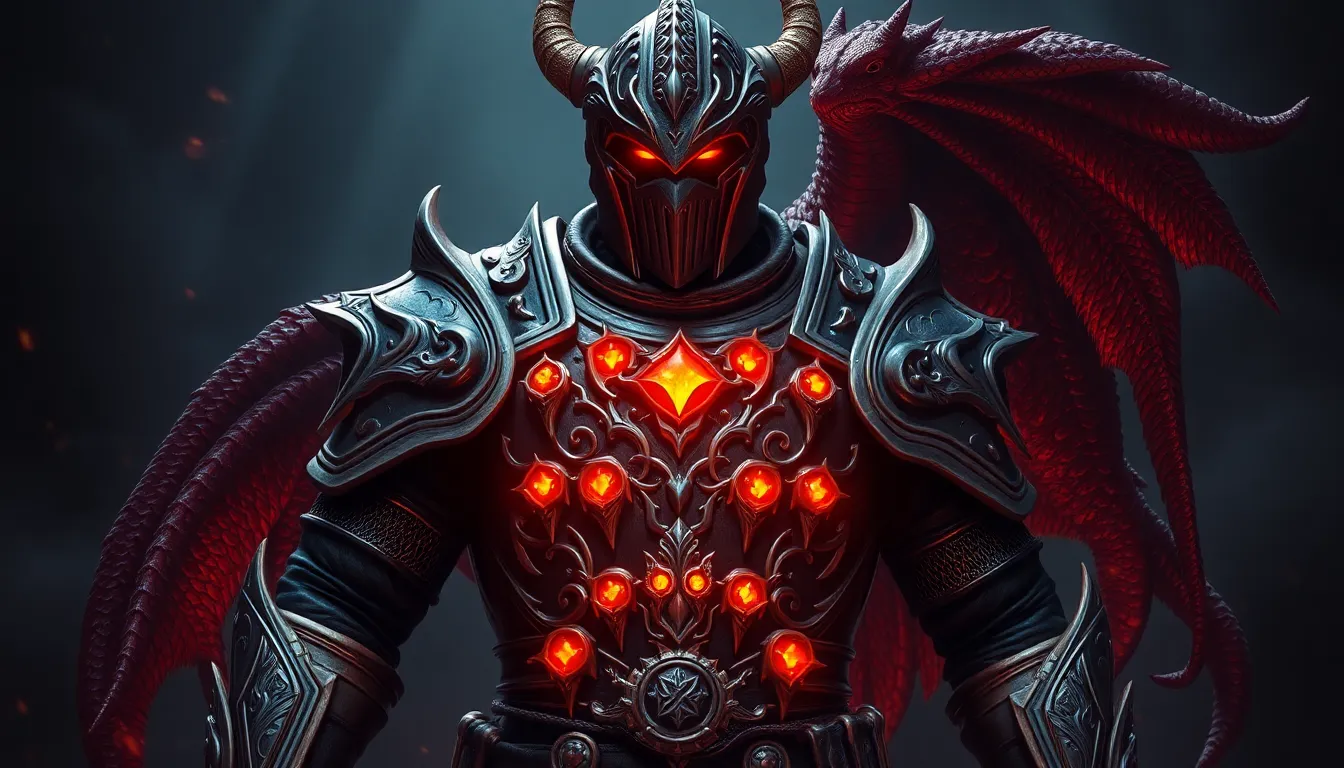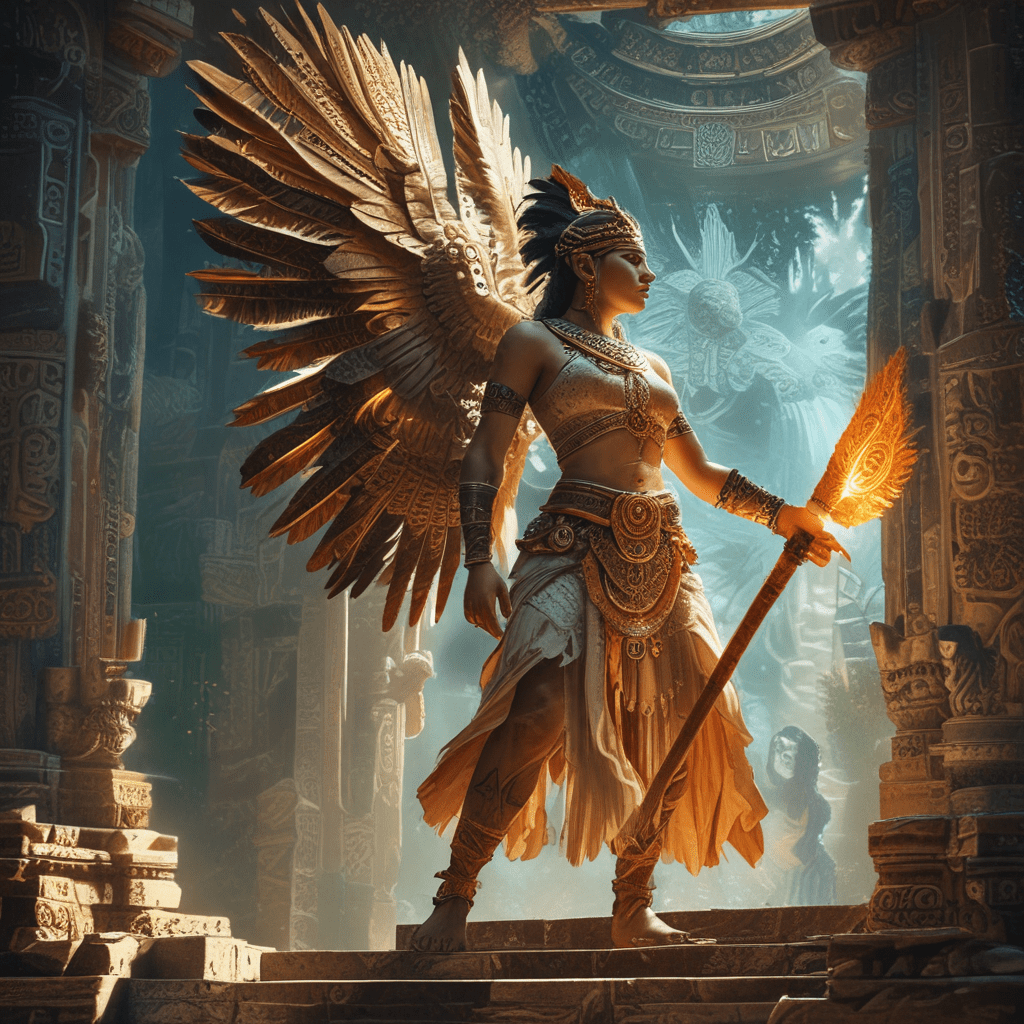The Enchanted Armor: Protection from Mythical Beasts
Introduction to Enchanted Armor
Enchanted armor occupies a significant place in the realm of mythology and folklore, serving not only as a means of physical protection but also as a symbol of divine favor and heroic prowess. From ancient tales to modern adaptations, the concept of armor imbued with magical properties has captivated the imaginations of countless generations. This article explores the multifaceted nature of enchanted armor, particularly its role in safeguarding heroes from the threats posed by mythical beasts.
Historical Context of Armor in Mythology
The evolution of armor can be traced back to ancient civilizations, where the need for protection in battles and confrontations with mythical creatures became paramount. Early armor was crafted from natural materials such as leather and bronze, but as cultures developed, so did the complexity and artistry of armor-making.
Notable myths featuring enchanted armor can be found across various traditions:
- Greek Mythology: The Aegis, a shield associated with Zeus and Athena, often depicted as a protective garment.
- Norse Mythology: The legendary armor of the gods, such as the mail coat of Thor, designed to withstand the might of giants.
- Celtic Traditions: The magical armors worn by heroes like Cú Chulainn, which granted them extraordinary abilities in battle.
Types of Mythical Beasts and Their Threats
Mythical beasts encompass a wide range of creatures, each presenting unique challenges to heroes and civilizations alike. These can be categorized into several types:
- Dragons: Often depicted as fire-breathing monstrosities, dragons symbolize chaos and destruction.
- Griffins: With the body of a lion and the head of an eagle, griffins are guardians of treasures and sacred sites.
- Chimeras: Multi-headed beasts that combine attributes of different animals, representing confusion and danger.
The dangers posed by these creatures are not solely physical; they often embody deeper fears and societal challenges, prompting heroes to seek enchanted armor as a means of protection and empowerment.
Material and Craftsmanship of Enchanted Armor
The materials used to create enchanted armor are often as mythical as the armor itself. Legendary substances include:
- Dragon Scales: Known for their imperviousness and magical properties, these scales are often sought after by armorers.
- Celestial Metals: Alloys forged in the heavens, believed to be imbued with the essence of the stars.
- Mythical Woods: Woods from sacred trees, such as Yggdrasil, which are said to confer protection and strength.
The crafting of such armor is a meticulous process, often requiring the skills of master artisans who are believed to channel the power of the materials through enchantments. This process not only enhances the physical attributes of the armor but also infuses it with magical properties.
Notable Examples of Enchanted Armor in Mythology
Throughout history, various examples of enchanted armor have emerged, each with its own story and significance:
- The Aegis of Zeus: A shield that instills terror in enemies, often depicted with the head of the Gorgon Medusa.
- The Armor of Achilles: In the Iliad, Achilles wears armor forged by Hephaestus, granting him near invincibility.
- Arthurian Legends: The armor of King Arthur and his knights, often described as shining and imbued with protective charms.
The Role of Enchanted Armor in Heroic Journeys
Enchanted armor serves as more than just physical protection; it symbolizes the hero’s journey and transformation. Wearing such armor often bestows confidence and courage, allowing heroes to face insurmountable odds. The psychological effects of donning enchanted armor can be profound, as it instills a sense of invincibility and purpose.
Modern Interpretations and Adaptations
In contemporary literature, films, and video games, enchanted armor continues to thrive as a popular motif. It appears in:
- Fantasy Novels: Series like “The Lord of the Rings” and “A Song of Ice and Fire” feature enchanted armor as key elements.
- Films: Movies such as “The Avengers” showcase characters with specialized armors that provide both protection and enhanced abilities.
- Video Games: Games like “Dark Souls” and “Zelda” include various forms of enchanted armor that players can acquire to bolster their defenses.
The influence of folklore on modern storytelling is evident in the design and narrative functions of these armors, often serving as artifacts of great power and significance.
Cultural Variations in Armor Design and Function
Enchanted armor varies significantly across different cultures and mythologies, each embodying unique aesthetics and symbolic meanings. For example:
- Japanese Mythology: Armor often features elaborate designs and is associated with samurai, symbolizing honor and valor.
- Indian Epics: Armors in texts like the Mahabharata are often described as radiant and imbued with divine protection.
- African Folklore: Various tribes have their own interpretations of protective gear, often linked to spiritual beliefs and ancestral heritage.
The cultural symbolism embedded in armor design reflects the values and beliefs of the respective societies, illustrating the diversity of human imagination in the face of danger.
The Future of Enchanted Armor in Popular Culture
As storytelling continues to evolve, the concept of enchanted armor is likely to adapt and expand. Predictions for the future include:
- The emergence of new mythical creatures, inspiring fresh designs for protective gear.
- Innovative storytelling techniques in gaming and film that integrate enchanted armor as a dynamic element of character development.
- The incorporation of technology, blending traditional concepts of enchanted armor with futuristic designs.
Conclusion: The Lasting Legacy of Enchanted Armor
The importance of protection in mythology is a testament to humanity’s enduring struggle against the unknown. Enchanted armor represents not only physical defense but also the inner strength and courage that heroes draw upon in their journeys. Its lasting appeal in human imagination and storytelling underscores the universal desire for safety in the face of adversity, ensuring that the legends of enchanted armor will continue to inspire generations to come.
https://www.youtube.com/watch?v=FYlqH6UqvHk



